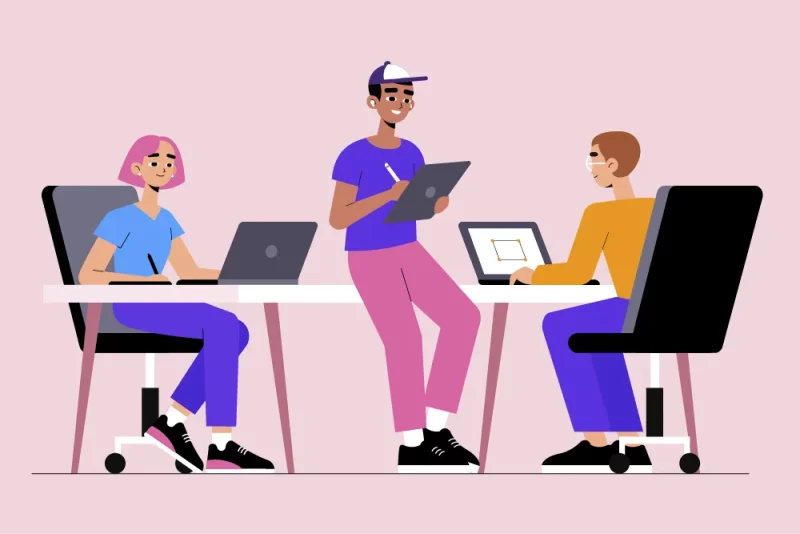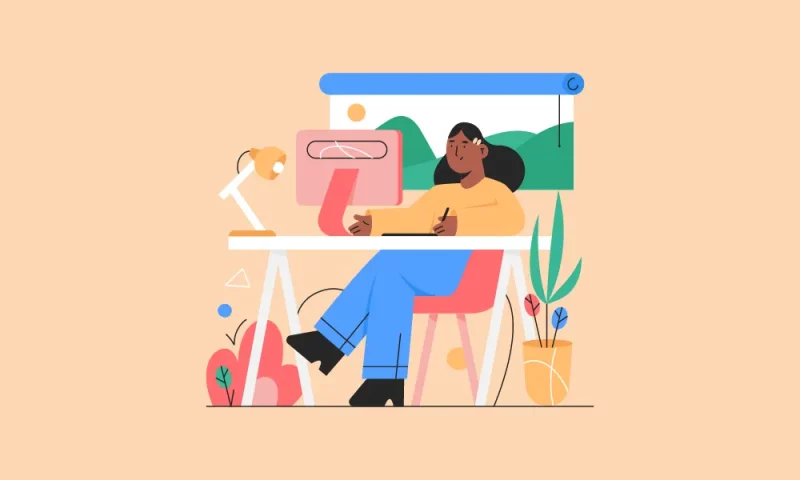
Every designer has a starting point in design. It was a time when they were still rookies in the design industry (Junior Designer), and they still needed a lot of guidance to get through this milestone.
However, with time, things started to change. With increasing knowledge and experience, Junior Designers get better until they can confidently say as Senior Designer in the industry. This article will show you how to judge yourself as a Junior Designer or Senior Designer. .
What is Junior Designer, Senior Design?
Similar to other professions, Designer also has a progression path according to different ranks.
Popular career progression paths in the Graphic Design field are as follows:
Intern -> Fresher -> Junior -> Senior -> Creative Director
- Intern Designer is a Design Intern position, also known as a starting position for students who do not have enough knowledge and experience. Becoming an Intern Designer is not only an opportunity for you to practice the knowledge you have learned, but also learn and hone new skills from the older brothers and sisters.
- Fresher is a position for Design students who have just graduated, have enough knowledge but lack actual combat experience. Unlike Intern, Fresher Designer will work as a full-time employee, fully enjoying the company’s welfare and salary regimes.
- Junior Designer is a term used to refer to Designers who have 1-2 years of working experience. Junior Designer has full knowledge as well as accumulated certain working skills in the industry, can work independently but still needs to learn from Seniors.
- Senior Designer is a person who has many professional skills and working experience in the Graphic Design industry from 4-5 years. And usually in this position, Junior will be the main decision maker, overseeing all stages from idea generation, idea implementation to completion.
- Creative Director or Creative Director is a position that many people dream of. Creative Director is a person who develops plans, strategies to build an image and brand for the company. Creative Director must be a person with good development orientation, know how to research and create effective strategies. Creative Director is the leader for the whole creative team. Therefore, to become a Creative Director, it is usually a person who has worked for 10 years or more.
5 differentiating factors between Junior Designer and Senior Designer

1. Work experience
In most organizations, there are different criteria to classify Junior Designer and Senior Designer. However, here are some important points to keep in mind, regardless of whether you are a Junior Designer or Senior Designer that is “ Work Experience ”.
Many designers mistakenly believe that their talent is enough to overshadow experience, especially if a designer has a growth mindset. While that view may be true in some cases, as you work you will gradually realize that you were wrong. Work experience will help you solve problems quickly, experience may have to do with the way you communicate, the way you convey ideas to those around you and also the way you deal with mistakes in your work. design process. For designers, work experience can also have different effects. Work experience is also related to how you work as a team. For example, if a designer claims to have three years of design experience,
Finally
, a designer (regardless of junio or senior) needs to have a growth mindset. This can help catalyze the growth process. This is why it is often advised, especially in design personnel, that sometimes a designer’s portfolio can be more important than years of experience.
So
for Junior designers, it’s important to pay attention to making your values visible in your portfolio. Every project should be an opportunity to learn.
2. Time management, prioritization
The basic difference is usually perception and ownership. Most senior designers tend to have problems negotiating time to complete a project. This often leads to unfavorable timelines for Junior designers. Senior designers, on the other hand, often choose a more convenient time to work. Senior designers also know the essential questions to ask when working on a project. This way, it’s easier to prioritize projects and set appropriate timelines.
Based on this premise, it is often advised that when hiring a Junior designer into a company, it is important to monitor to ensure they have a clear understanding of how to follow these processes. In addition, Senior designers should always strive to find methods and frameworks for design execution, and be open to their team about the details of the task. They should ask for help if they need it.
3. Find solutions, ask for help

Most Junior designers often have problems asking for help regarding the development of solutions. This can be the main distinguishing factor between Senior and Junior designers. When you need help, you can reach out to people who are more experienced in the matter. However, to make it easier to start a conversation, giving an opinion can be a good starting point for a conversation.
4. Clear presentation, detailed feedback
The ability to articulate design decisions effectively represents one’s ability to master the craft. To gauge a designer’s level of development, the presentation of their design decisions is also important in this process. In most cases, Junior designers complete projects with the expectation of receiving general feedback. However, senior designers are very specific about the type of feedback they want to receive.
This also applies to the presentation of the design process. Most Senior designers express intent and clarity with the design decisions made, especially in line with the overall project goals. Therefore, young designers should pay more attention to their presentation skills and aim for improvement. Being clear with your design decisions is an essential skill to win over clients and users as a designer.
5. Communication and management skills

Management doesn’t simply judge a designer’s maturity. In fact, that might be the only difference between a great product designer and a great product designer. Designers only design what the team leader or design manager requires. This can be the big difference between Junior and Senior designers because while most Junior designers are usually design staff, Senior designers are often in charge, leader or manager.
Managing experience as a designer is a more holistic approach to solving design problems. The curator looks beyond the scope of the requirements and finds new and creative solutions to possible problems that may not even have been evaluated.
Conclude
In summary, the distinguishing factors between Junior Designers and Senior Designers are mainly due to the experience gained over time. However, Junior designers can accelerate their development by working closely with Senior designers. This way, they can take advantage of the rich experience of Senior designers while accumulating some of their own.

![What is Infographic? How to design beautiful and attractive Infographic [Template] 5 infographic la gi](https://maludesign.vn/wp-content/uploads/2022/12/infographic-la-gi-500x500.webp)


